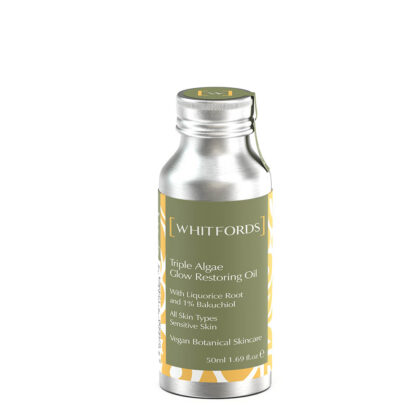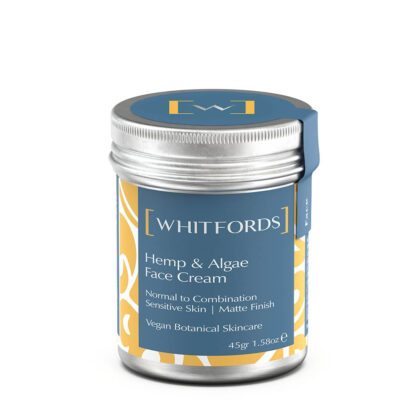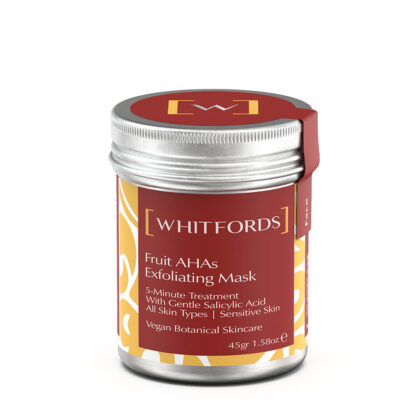Sustainable Packaging by Whitfords
The Reality of Skincare Packaging
For decades, excessive beauty packaging has been a critical component of marketing cosmetic products. However, as sustainability and plastic-free packaging becomes more of a priority for consumers, the days of traditional packaging might be numbered.
The reality is that the global cosmetics industry produces more than 120 billion units of packaging every year. Plastic is mostly used as the ‘secondary’ packaging in skincare and protects the product from air and light and prevents leakage.
This secondary packaging is often wrapped in ‘primary’ or ‘retail’ packaging, usually made of plastic-coated cardboard.
While recycling efforts have increased dramatically over the last decade, only around nine per cent of plastic is ever recycled.
The remaining 91 per cent is either burned or, far more commonly, shipped abroad where poor containment practices see it dumped in agricultural land or into the sea as plastic pollution.
We’ve already discussed the need to tackle the plastic waste problem. In this article, we’ll be looking at what steps are being taken to get us to that goal.

A Brief History of Skincare Packaging
Skincare and its packaging have been with us since the Ancient Egyptian used kohl to line their eyes, and the Ancient Greeks used a pyxis, a small round box, to store creams and ointments.
Through the middle ages, renaissance and early modern period, ceramic and glass remained the primary materials used to contain skincare products. However, small containers were also made of gold, silver, jade, soapstone, polished wood, animal horn, and even lead.
While metals such as iron, steel and copper were widely available, they often reacted with the skincare product and corroded, so saw little use.
Aluminium only became widely available in the 19th-century after the discovery of the Bayer and Hall–Héroult processes, but quickly rose to become the most produced non-ferrous metal. As it is corrosion-resistant, aluminium was used as a container for skincare products as well as food and drink.
The period from 1907 to the 1950s saw a massive increase in the number of recognizable skincare brands and a revolution in plastic packaging use.
During this time, companies such as Maybelline, Max Factor, L’Oreal, Coppertone and Revlon began to invent and produce branded skincare products. At roughly the same time, brands began using brightly coloured cardboard packaging to attract customers.
With the invention of Cellophane in 1908, injection moulded plastics in 1926, and polypropylene in 1954, beauty companies quickly adopted these new low-cost, high-volume materials.
Plastic, Cellophane, and plastic-coated cardboard have become central to modern skincare packaging. However, they are far from the only options.
Innovative sustainable packaging alternatives are now being utilized alongside an increased focus on how skincare packaging can be recycled and reused.
The Evolution of Sustainable Skincare Packaging
Driven by consumer demand, cosmetics companies of all sizes are changing how they approach skincare packaging.
Recycled Plastic Packaging
Estée Lauder has committed to making 75-100% of their packaging recyclable, refillable, reusable, recycled or recoverable by 2025. Unilever has committed to similar goals, as has L’Oréal.
Procter & Gamble are moving to put all their Pantene’s hair care products in refillable containers and has committed to making 100 per cent of its products’ packaging recyclable or reusable by 2030.
Refillable Containers
Being able to refill products in-store became one of the primary packaging trends of 2020, with zero-waste shops proliferating all across the UK, and looks set to continue on into 2021 as consumers prioritise sustainable skincare.
However, there are sustainability issues associated with prioritising refillable containers.
Unless refills are made locally available to customers, companies need to take into account the increased CO2 emissions of customer driving to get refills. This also applies to the increased transportation caused by schemes where customers can post empty containers back to the supplier and have a full one posted back to them.
Economies of scale allow mainstream skincare giants to implement refilling initiatives without passing on the cost to the customer.
However, given the logistical burdens of refilling, sanitising and returning the containers, it remains difficult for small-batch independent brands to implement without significant price increases.
Bioplastics and Bio-degradable Plastics
Bioplastics are created from renewable biomass sources. These include thermoplastic starch, cellulose esters, wheat gluten, and polylactic acid (PLA).
The benefit of using bioplastics in cosmetic packaging is that they are not a byproduct of the pollution-heavy petrochemical industry.
However, they are not without their drawbacks. Data published in the journal Environmental Research indicated that producing plastics with renewable energy sources reduced emission by 75 per cent. By comparison, bioplastics production only reduced emissions by 25%.
Research by the University of Pittsburgh showed that cultivation of crops for bioplastics actually contributed to a rise in pollutants through fertilizers, pesticides and production chemicals.
In an increasingly food-and-water-scarce world, bioplastics also require land to be diverted from food production and some require significant irrigation.
Some, but not all, bioplastics are also biodegradable, although the actual process required to have them bio-degrade is not as simple as many people think.
Most bio-degradable plastic only degrades under specific conditions to remain useful as packaging materials. This might mean they only bio-degrade in high temperatures or within industrial composting facilities.
Unfortunately, significant amounts of bio-degradable plastic make it into landfills or the ocean where they are never exposed to the specific conditions that make them degrade.
Once in a marine environment, bio-degradable plastics act the same as petroleum-based plastic and represent a significant danger to marine life.
Glass
Glass is highly reusable and recyclable, making it an ideal step to creating plastic-free skincare. Certain brands have already converted a significant proportion of their packaging to glass.
However, glass has a particular drawback. Commonly used glass bottles often contain a pump made of plastic and metal. Smaller plastic mechanisms like pumps and lipstick containers are notoriously hard to recycle.
Glass is also heavy, and there is always the risk of injury through breakage.
Aluminium Jars
Whitford’s exclusive use of aluminium jars is due to the sheer amount of sustainability benefits associated with aluminium packaging.
Aluminium is as recyclable as glass while being lighter, stronger, and less prone to breakage. While aluminium does have to be mined, which is an emission-heavy process, recycling aluminium only takes 5 per cent of the energy needed to create it.
Since it is so recyclable, 75 per cent of all aluminium produced since the late 19th century is still used today. There is significant aluminium recycling infrastructure in both the U.K. and Europe, allowing 73 per cent of all beverage cans in Europe to be recycled.
Our ultimate goal is to create all our secondary packaging out of 100 per cent recycled aluminium. Our retail packaging is also made from FSC-certified cardboard from responsibly managed forests and without a plastic coating.
What’s Stopping/Delaying Change?
Consumer demand for sustainable skincare products has risen significantly in recent years. However, the price is still the primary driver.
Recent surveys have shown that, while suitability was one of the three most important factors customers assess when making skincare purchases, only 43 per cent of those surveyed would pay more for eco-friendly products.
Recycling habits for skincare products are also lagging behind other plastic waste. Only around 50 per cent of Brits recycle bathroom waste, as opposed to 90 per cent who recycle kitchen waste. This results in 2.7 billion plastic bottles ending up in landfills every year.
Beauty Brands and Greenwashing
Another blocker to plastic-free skincare is the rise in ‘greenwashing’ or the misrepresentation of a product’s sustainability and its normalisation.
Companies have made lofty assertions about products being eco-friendly or green in reaction to increasing consumer demand for sustainability. Unfortunately, unlike “organic” and “gluten-free” these terms are not regulated and can often be misleading.
Companies often brand their products as ‘plastic-free’ after changing their secondary packaging to glass or something similar, while still making use of plastic lid, dropper, and pumps.
Instances of business loudly proclaiming the benefits of their ‘natural’ product, while still using lots of synthetic ingredients and shipping them in plastic containers, or trading on the lack of a clear definition for ‘sustainability’ to get a competitive advantage, has damaged public trust.
The Drive for Zero-Waste Skincare
At Whitfords, we remain committed to pursuing genuine sustainability as the core of our business.
While innovative solutions like bioplastics and bio-degradable plastics continue to be developed to the point of true sustainability, we will continue to revisit our packaging choices and adapt as newer, more sustainable alternatives become available.
-
0 out of 5
Whitfords Triple Algae Glow Restoring Oil 50ml
£39.00 -
0 out of 5
Whitfords Hemp & Algae Face Cream 45g
£35.00 -
0 out of 5
Whitfords Fruit Ahas Exfoliating Mask, 5-Minute Treatment 45g
£30.00 -
0 out of 5
Whitfords Papaya & Bakuchiol Gel Serum
£36.00
Sign up for 10% off your first order
Stay informed with our regular newsletter & hear about new brands, products, competitions and more.
INFORMATION
MY ACCOUNT
BRANDS
AFFILIATES
CONTACT US
Counter Culture Group Limited © 2024




